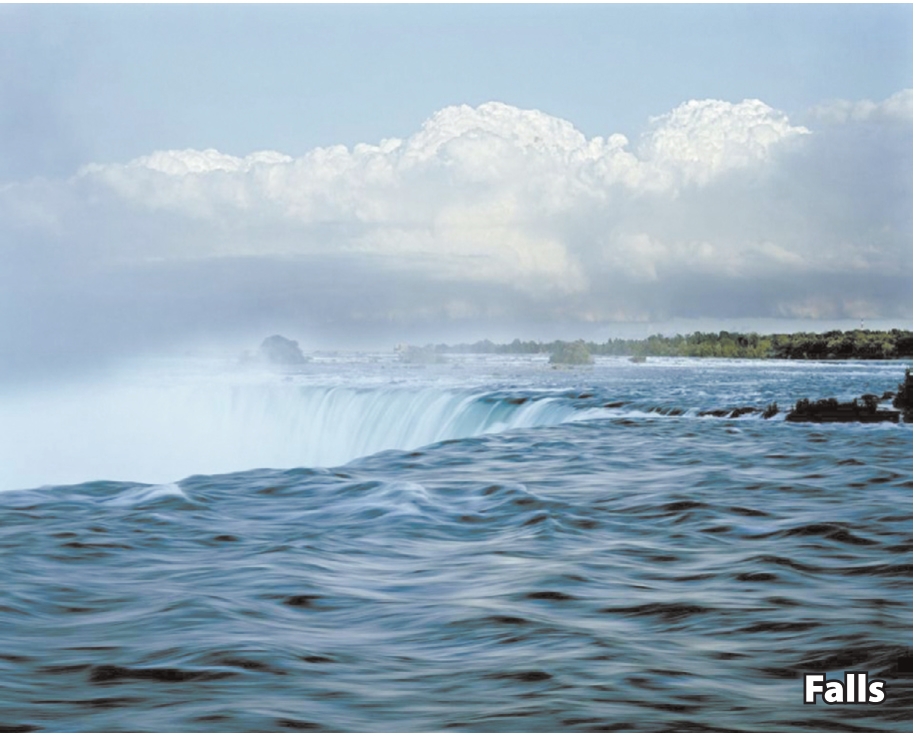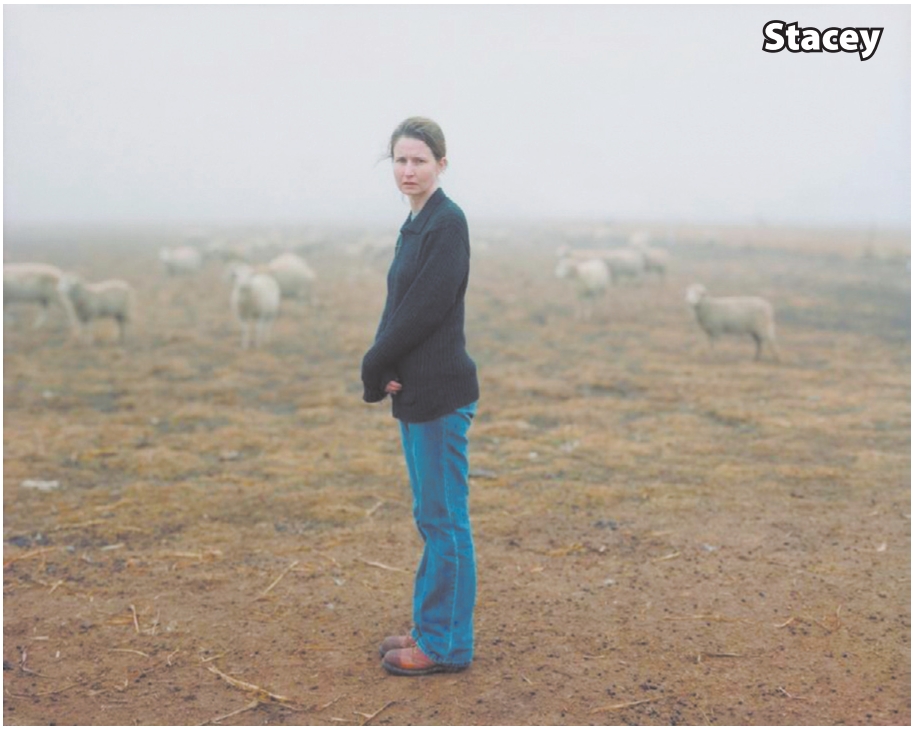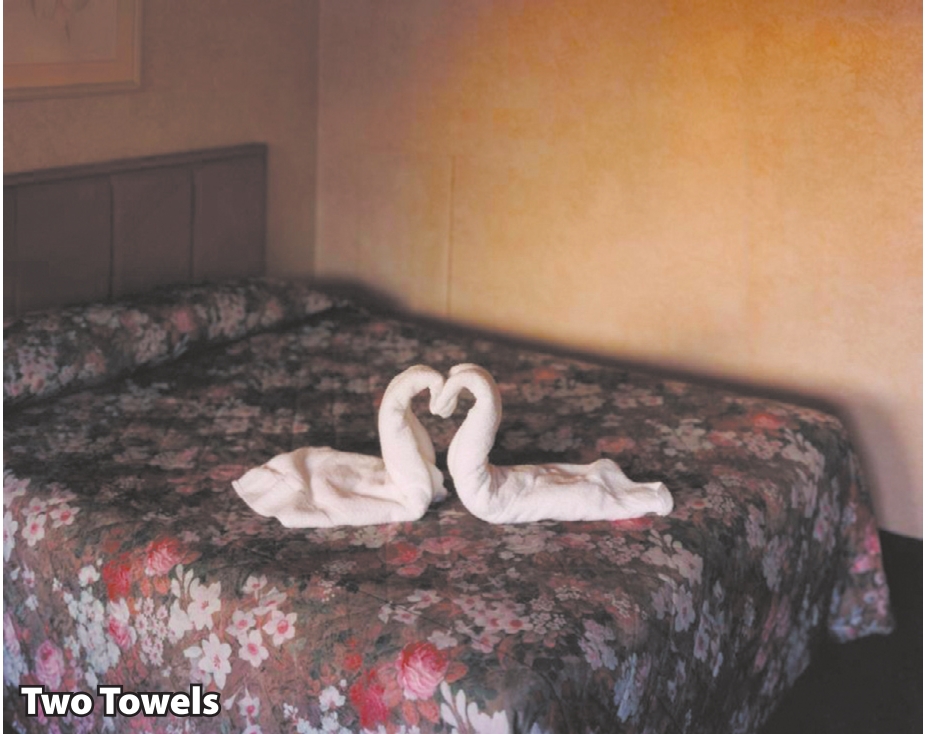
Alec
Soth specializes in photographing subjects as they
are, where they are
The New Times Interview
As a young man, Alec Soth was fascinated by the idea of leaving it all behind. He identified with the adventurer in Huckleberry Finn, gravitating toward the very same river that launched Finn’s spontaneous, riotous exploits.
Born in Minneapolis in 1969, at age 30 Soth decided to take a chance on his art when he quit his job at the Minneapolis Institute of the Arts, photographing its holdings for use in brochures and magazines, and set off on a road trip along the Mississippi River. He documented people, places, porches and paper planes along the way through his deceptively named R.H. Phillips and Sons 8x10 Compact camera—a gargantuan machine, a far cry from today’s point-and-shoot cameras, with negatives costing $20 a pop.
Four years, and several fuel stops later, he self-published 25 copies of his book, Sleeping by the Mississippi, which attracted notice from critics, peers and publishers alike. By March 2004, his work was hanging at the Whitney Museum of American Art’s signature exhibition of contemporary American photography, The Whitney Biennial. “As custom dictates, a few good discoveries (Alec Soth, a photographer) ...” wrote New York Times art critic Michael Kimmelman in his review of the event. Parentheses notwithstanding, this mention launched Soth’s increasingly successful career.
Since then, he has continued on his quest to discover America as he sees it: a country littered with extraordinary beauty and ordinary people, quotidian objects amid breathtaking landscapes. “Broken Manual,” his latest work, forming part of his current exhibit at the Everson Museum of Art, features disco balls suspended from tree branches, satellite dishes drilled into rock faces and Rubbermaid trash cans in the wilderness.
Soth, now 42, comes from an artistic background, having dabbled in painting before picking up a camera. An art photographer at heart, he creates selective commercial and editorial photographs for Magnum, a photographic cooperative owned by its members that maintains an extensive archive of editorial photographs from across the world for use by the press, publishers, advertising and television.
His current exhibit at the Everson, From Here to There: Alec Soth’s America showcases his early work: the Mississippi collection and “Niagara,” and his latest project, “Broken Manual,” which, as Soth explains, is about “the desire to run away and the knowledge that you can’t.” (See review on page 21.) On Nov. 4, Soth was the keynote speaker at the Society for Photographic Education (SPE) Conference orchestrated by Syracuse University in partnership with Light Work Gallery. After his talk, he sat down with The New Times for a talk of a different sort.
Q : How did you get started with photography?
A: Oh, my God (laughs). Well, in high school I discovered art. I had a great teacher who really woke me up. He was a painter, so I took that route into it, but I soon realized I was a terrible painter and ended up in photography. But I always came at photography from an art perspective, not journalism or commercial photography. When you do photography everyone asks you to do a wedding. I ended up doing various things: I worked in an art museum as a photographer for a number of years, and eventually I did this project “Sleeping by the Mississippi” which got out in the world and kind of launched my career.
Q : What motivated you to print the book?
A : I think every photographer has the ambition for a book. It’s how I would see most things photographically—in book form. It seemed impossible so I self-published 25 copies originally and that led to publishers wanting to do it. It’s always been my ambition, it’s always the thing I’m working toward.
Q : When did you get your first camera? Do you still use it?
A : No. And I’m not a camera fetishist. My dad gave me his camera, and then I’ve been through a variety of cameras, but I think part of coming from the arts side of things means it’s not about the camera so much. I use a lot of different cameras.
Q : And right now, you use the 8X10?
A: No, I mostly use digital now and, you know, I use my iPhone. (laughs)
Q : Well, technique aside, what interests me most, and I think most people, about your work is your interaction with your subjects. It sets you apart from a lot of other photographers. Would you like to talk a bit about that?
A: It’s funny. When someone looks at one of my books I want the reader to become the protagonist. But when you have people in the pictures, it thwarts that a little bit. It’s odd that the thing I would be known for is photographing people when it’s not really my ambition as a photographer. Yet, it seems to be the thing that I come back to, for whatever reason, and I don’t really understand it. Like the last project I did, I really wanted it to just be a landscape project and then it wasn’t in the end. I mean, the best explanation is that it’s a form of therapy for me and I do it for that reason, but I don’t totally understand it. I don’t understand why I do it, nor do I totally understand why people respond to it.
Q : So when you decide to do a project, do you plan out what you’re going to do?
A: Yeah, there is initial vague planning and then this constant reshaping of it. Working toward the book form is somewhat analogous to a novelist: You sketch out the basic parameters, but when you sit down to write, you learn things about the character and things change. Similarly, when you go out and photograph, the world reveals itself in different ways than you expected.
Q : Speaking of the unexpected, could you comment on your relationship with Magnum? You’re probably one of the two art photographers in the organization. How did that come about?
A: That happened because when I left my job to be an artist, I wasn’t confident in the art world. I needed a backup plan. So I started doing commercial and editorial art. Magnum was a way to augment that part of my life. But that’s not the principal driving factor for it now. I mean, fundamentally Magnum is—it sounds really corny—but it’s a family. It’s these people I engage with all the time, because we own the organization, so we’re not just like photographers out there. We’re forced to interact with each other all the time, and that interaction is what it’s about. It’s kind of like family in that they drive you crazy (laughs) and Soth you can’t wait to get away from them and then the holidays come around and you can’t wait to see them again.

A : In many, many ways. Magnum has really internationalized my work. I have met different people and had encounters with different cultures that I wouldn’t have had. I’ve learned a lot from the photographers working in different regions and in different styles all over the world. And it has also challenged me. When I do commissioned work now that is Magnum-related, that’s really expanded my vocabulary as a photographer.
Q: How have other photographers affected your work? Who are your biggest influences?
A: (Laughs) That’s always a difficult question because one’s biggest influences tend to come from when you first get engaged in the medium, whoever those people happen to be. So for me, at that time in my life, it tended to be a group of American photographers of the generation before me. So, Robert Adams, Stephen Shore, Joel Sternfeld, whom I studied under, John Gossage, who’s someone I did a project with recently. Now, I look for inspiration in a million different places, but it’s not the same thing, I don’t worship at the altar of someone in the same way. As Jonathan Franzen says, as you go on you’re sort of influenced by your own work and the trajectory of your own work.

Q : Your projects involve a lot of travel. Do you make your road trips alone?
A: I used to go alone early on, because that was the dream and the fantasy, and it’s changed. I’ve done projects where I’ve worked with different people and I found it weirdly meaningful and I’m sort of done for now with that lone road trip model. It’s not where my head’s at at the moment. So, it’s changing.
Q : Do you have a favorite road trip? Your most memorable experience?
A: I can answer that in a split second. I know that the first time, that first Mississippi trip I made alone, I’ll never forget because I’d been working a job and I built up this time that I could leave and I remember driving. I hit the river and I remember I could go right or I could go left. I could go upriver or I could go downriver. I’m just thinking, wow, I can do whatever I want to do. And that feeling was just intoxicating. What’s different now is that I have that freedom all the time, in a funny way (laughs), in the sense that I take it for granted. But also, I’m not free in the same way. With email and everything you’re always connected.
Q : So it’s that first trip, you would say?
A: It’s funny because I did another Mississippi trip with my girlfriend from college and that too was an incredible trip and I have a lot of romantic feelings toward it. But now, trips mean something else.
Q: And how long did this trip last?
A: The trip was like 1999 to 2003. The book was published in 2004.
Q : Did the terrorist attacks of 9/11 affect the work you did in any way?
A : That’s a good question. It did, but I don’t know how to articulate it. I don’t think it was an immediate thing, but over time, photographing has taken on a different meaning. People treat it as a more suspicious activity than they used to. When I was doing “Niagara” I really felt that a lot. I had a number of problems with the police and I felt a sort of fear, this cultural fear was more intense at times. I didn’t feel it with Mississippi so much, but yes, I’ve come to feel it.
Q : Do you have any special memories of your subjects? Any stories or anecdotes that have stayed with you?
A : The one that pops to mind right now is Steve LaFountaine. Steve is a survivalist living in northwest Arkansas and what’s funny about him is that he’s on the Internet all the time, he emails me all the time. You don’t think survivalists use email. I recently found out that he was the guy who, without my knowing it, wrote my Wikipedia page, which is really funny (laughs) because it’s quirky Wikipedia. I was reading it and thinking “Who wrote this?” and I wrote about it on my blog. Steve emails back that he did it. And it’s just an interesting parallel because he’s stockpiling provisions, though he moved to this part of Arkansas for survivalist reasons. He’s a delightfully complicated character. There’s a documentary film about this project and he’s in the film.
Q : Do you keep in touch with your subjects?
A: Sometimes. Like this guy, Steve. But actually that’s a real exception. There’s just a handful of people. One thing about my engagement with people is that I don’t live or spend that much time with them. In fact, I like to keep a certain amount of distance in so that I’m imagining their lives as much as learning about them.
Q : Could you comment on this exhibit at the Everson?
A : I’m super-happy with it. I mean, this exhibition originated where I live in Minnesota at the Walker Art Center. I didn’t want it to be a retrospective, because I’m too young, you know? But also I didn’t want it to be “come look at everything I’ve done.” So I wanted to give it this focus of containing it to pictures I’ve made in America where it has this almost geographical quality about it and I think we pulled it off. And at the Everson, the galleries are perfectly suited to my scale of work; they’re neither too big nor too small, so I really hope many people get to see it.
Q : How much of your work do you do outside America?
A : I’ve done a significant amount. I think I’m not as good outside of America because I can’t read the landscape in the same way, but because of Magnum I’ve worked in China, France, recently in Rome, within this year in Iceland, lots of places. But I never feel like I’m doing the ultimate work (laughs). That is why with From Here to There I felt this toward America. I can read the landscape in a more nuanced way.